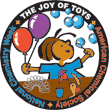Education & Play: Electronic Resources
This is a collection of electronic resources (websites, software, etc.) about activities, experiments, and play you can do to learn more about chemistry and science. A separate collection of Print Resources is also available.
Key: E = Elementary (K–5), I = Intermediate (6–8), HS = High School (9–12), C = College, G = General Public
- Chemistry in the Toystore. Provided by: David Katz. (E, I, HS, G)
- David Katz was the first to give a talk about the chemistry of toys and to provide chemistry experiments to investigate or to prepare a number of toy-type materials in the lab or at home.
- Chymist.com. Provided by: David A. Katz. (E, I, HS)
- The official Web site of David A. Katz, Originator of Chemistry in the Toy Store. This web site contains demonstrations and hands-on activities on a wide range of topics to fit specific needs and audiences from preschool to teacher in-service and professional scientists.
- Creative Chemistry. Provided by: Harrogate Granby High School, UK. (E, I, HS)
- Whether you are a teacher, doing chemistry at school, or are simply just interested in chemistry, this site has lots for you.
- Do-It-Yourself Science. Provided by: California Science Center. (E, I, HS)
- You don’t need a laboratory to experiment with science—try some of these fun science activities at home!
- Doctor Slime’s Laboratories. Provided by: Delta College (Bay City, Michigan). (E, I, HS)
- Includes demonstrations and experiments for Mad Scientists, Slimeologists, K-12 Teachers & Home Schooling Parents!
- Dr. Toy’s Guide on the Internet. Provided by: Institute for Childhood Resources. (E, I, HS, G)
- First web site to provide information on the best toys and educational products, as well as, articles, resources, and toy-related links.
- Engaging Science: Online Games. Provided by: Engaging Science. (E, I)
- Play games, have fun, and learn science! Topics covered in the games are life, physical, earth, and space sciences.
- Invention at Play. Provided by: Lemelson Center. (?)
- Explore the playful side of invention and the invention side of play.
- NanoKids. Provided by: Rice University. (E, I, HS)
- This web site is dedicated to increasing public knowledge of the nanoscale world and the emerging molecular research and technology that is rapidly expanding internationally. Based on actual anthropomorphic molecules synthesized in the laboratory, the NanoKids visual concept utilizes universally recognized forms exhibiting human characteristics to instruct, motivate, and entertain.
- Science Behind Glow-in-the-Dark Toys. (pdf) Provided by: Energy Information Administration. (HS)
- In this article and related activity, students will explore the science behind glow-in-the-dark, or photoluminescent, objects.
- Science is Fun: Home Experiments. Provided by: Professor Shakhashiri, University of Wisconsin-Madison. (I, HS, C, G)
- This collection of experiments will add joy to your science experience.
- Science Toymaker Home Page. Provided by: Science Toy Maker. (G)
- Non-commercial site for people who like to roll up their sleeves and make fun, mysterious toys and projects that entice scientific investigation. It is a resource for inspired parents, kids, teachers, teenagers, home schoolers and science fair participants.
- Science Snacks. Provided by: The Exploratorium. (E, I, HS)
- These pages are full of Snacks…but they’re not the kind you eat. They’re the kind you can learn from and have fun with. Exploratorium Science Snacks are miniature versions of some of the most popular exhibits at the Exploratorium.
- Terrific Science: Fun Science Resources for Teachers, Parents, and Kids. Provided by: Miami University’s Center for Chemistry Education. (E, I, HS)
- We all benefit from better science education. Today’s students are tomorrow’s leaders, voters, and employees. Miami University’s Center for Chemistry Education (CCE) in Middletown, Ohio, fosters quality hands-on, minds-on chemical education that encourages teachers and students to work together to solve scientific challenges, think critically, and use their powers of observation.
- What’s That Stuff?. Provided by: American Chemical Society. (G)
- This site puts science into everyday life, with informative descriptions of the chemistry behind the products we use on a regular basis.
Copyright © 2005 American Chemical Society


